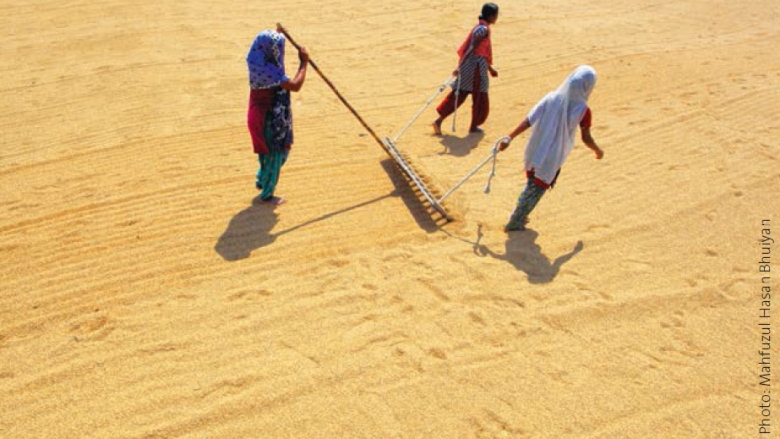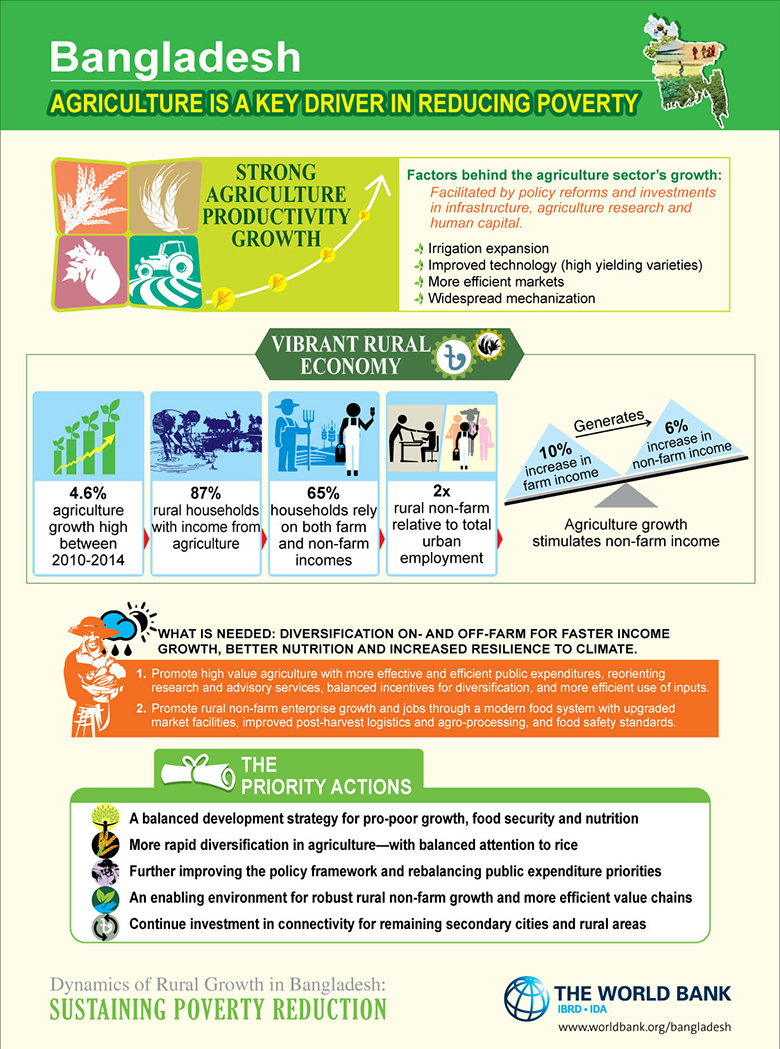Bangladesh is well known for its progress in human development. But its achievements in agriculture remain an untold story despite being key to reducing poverty since 2000. A new World Bank report “Dynamics of Rural Growth in Bangladesh: Sustaining Poverty Reduction” identifies changes in the farm and non-farm sectors of the rural economy and the policy implications and actions to foster future growth, further reduce poverty, and improve food security and nutrition.
A Vibrant Rural Economy
Agriculture plays a key role in Bangladesh’s economic growth. Extensive irrigation, high-yielding crop varieties, more efficient markets, and mechanization, enabled by policy reforms and investments in agriculture research, human capital, and roads have driven agriculture sector’s growth.
Agriculture is a major source of rural jobs in Bangladesh. Over 87 percent rural people derive at least some income from agriculture. However, two thirds of rural households rely on both farm and non-farm incomes. Pro-poor agriculture growth has stimulated the non-farm economy in Bangladesh: a 10 percent rise in farm incomes generates a 6 percent rise in non-farm incomes. As non-farm incomes continue to grow, the government needs to focus on fostering a more robust rural non-farm economy.
Realigning Priorities to Sustain Growth Into the Future
Today, the largest share of public expenditure for agriculture goes to subsidies. At the same time, nearly half of the farmers are overusing chemical fertilizers, which create environmental and health hazards.
While rural non-farm employment is large -- almost double of total urban employment– and growing, non-farm businesses are not expanding or diversifying fast enough.
Even though the market is functioning well, more investments are necessary to upgrade market facilities, improve food safety systems, and help traders of high value products access working capital.
Bangladesh has great potential to raise agriculture-generated incomes, increase agriculture productivity and make it more resilient to climate change, and improve the nutritional value of crops. As the study suggests, the country should focus on the following action areas:
- A balanced development strategy should be developed for both farm and non-farm growth.
- More rapid diversification in agriculture—with balanced attention to rice. Diversification into high value agriculture is a priority. This includes ensuring balanced incentives to promote high value agriculture that includes horticulture, livestock, poultry and fisheries.
- Further improving the policy framework and rebalancing public expenditure priorities. More investment is required in research and extension services, markets and infrastructure. Regulatory and institutional constraints should be removed for encouraging private sector participation in the seed sector.
- An enabling environment for robust rural non-farm growth and more efficient value chains. For non-farm growth to flourish, it is essential to make it easier for enterprises to do business. Access to finance, power, roads, technology and information along with removing discriminatory taxes and stifling regulations are needed. It is also important to ensure food safety standards, build modern market infrastructure and promote agriculture related non-farm enterprises such as trading and processing.
- Continued investment in connectivity is needed to increase business jobs in smaller cities and rural areas which remain isolated.


